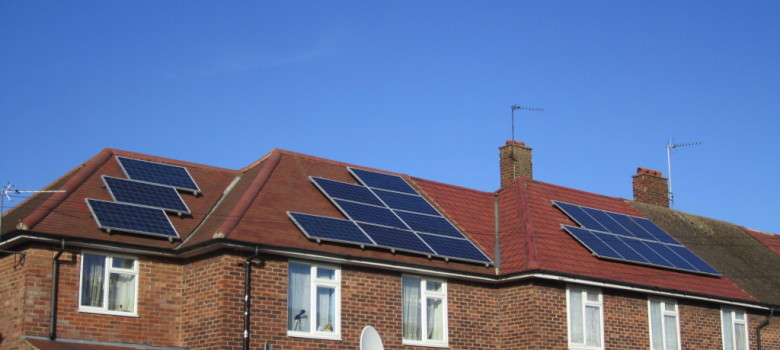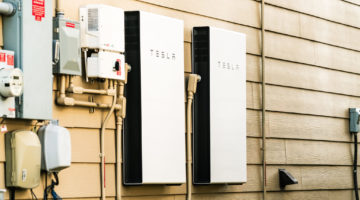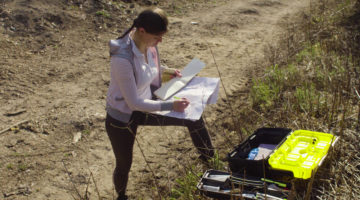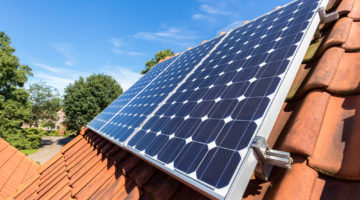
Each solar setup has its own benefits and limitations, and it is important to gain a real understanding of these before you invest in a potentially expensive solar PV system, to help avoid disappointment further down the line.
Grid-tied solar PV Systems
99% of solar systems installed on people’s homes in the UK are what’s known as ‘grid-tied’ systems. These grid-tied systems allow you to use the free electricity you create from the solar PV system, as well as electricity from the National Grid. This gives you flexibility, since you have a constant supply of electricity, whether or not the sun is shining.
Any shortfall in supply from your solar PV array can be met by additional electricity supplied via the grid, but there is also the added benefit of being able to sell any surplus back to the grid. In essence, a grid-tied system will go some way to reducing your dependence on the utility companies, and also save you money, while still giving you the comfort of as much electricity as you need from the grid. The lack of batteries also makes this type of solar setup cheaper to install.
Grid-tied solar PV installations have become incredibly popular in the UK recently due to generous government subsidies (guaranteed for 25 years from the date of installation).
Off-grid/standalone solar PV systems
Producing 100% of your own electricity in a clean and sustainable manner is the dream scenario for many people; the thought of never paying another electricity bill, and never suffering from grid blackouts is obviously a very attractive proposition.
However, an off-grid system does not need to be very sophisticated and grand in scale – it can simply power a light in your garden shed, or a water fountain in your garden. For this reason, off-grid installations are the most common type of solar installation across the globe, providing electricity to any isolated location (normally where no other electricity source is readily available).
The disadvantage is that you essentially become the utility company, so any costly repairs fall under your remit. Also, if there is a problem with your supply for any reason, you will not have electricity. Solar power is also an intermittent source (i.e it doesn’t power 100% of the time), so if you need electricity during the night (for lighting etc), you will need to install batteries within your system. These enable you to store energy during the day and use it when you are not generating.
The rewards for installing an off-grid system are clear; however the increased responsibility of owning your home’s electricity supply could make this kind of system a potentially daunting task for solar PV beginners.
Grid-tied with battery backup systems
The issue with this system is its added complexity compared to the grid-tied solar PV system described above. The batteries will require additional maintenance and add significantly to the final cost, and they will also introduce additional inefficiencies within your system – potentially a 15% loss in overall performance.
Grid fallback systems
This is where electricity is taken from the batteries and run through an inverter to provide the electricity required in the home. Once the batteries begin to go flat, the system automatically switches over to grid power, allowing the solar panels to once again charge the bank of batteries, and the process starts again.
Installing Solar PV
Are you thinking about installing a solar PV system at home? We have scoured the country for the best tradespeople, so that we can make sure we only recommend those we really trust.
If you would like us to find you a local installer to help install a solar PV system in your home, just fill in the form below and we will be in touch shortly!













No Comments yet! Be the first one.